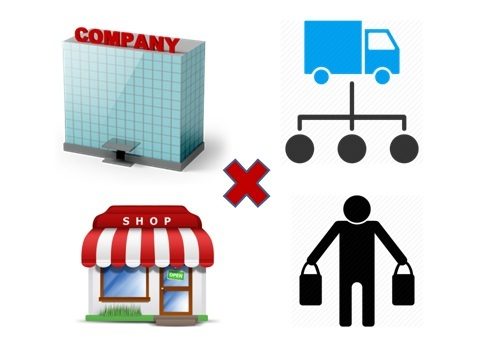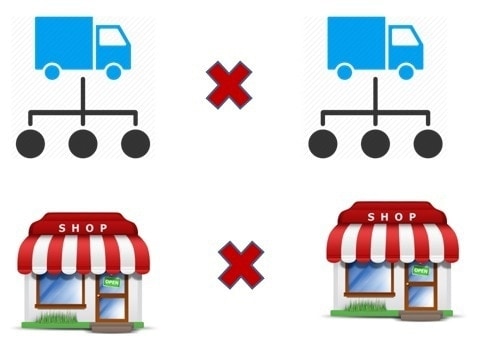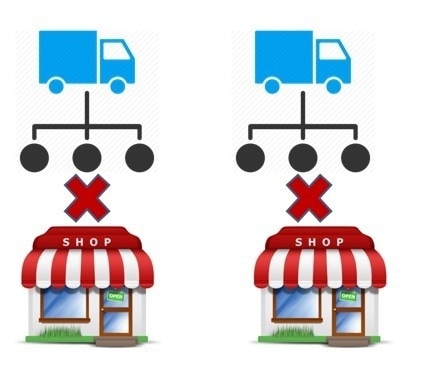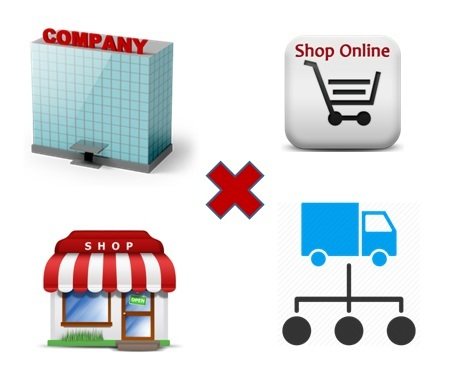Channel conflict occurs when two or more channel partners are competing against each other for the same business. Channel conflicts can arise when there are multiple sales channels, or when channel partners are selling competing products.
Channel conflict can also occur when one channel partner is selling a product that is similar to another channel partner’s product. Channel conflict can be resolved by managing the channel conflict, or by resolving the underlying sales issue. Channel conflict can also be prevented by carefully choosing channel partners, and by providing them with training and support.
Table of Contents
What is channel conflict?
Channel conflict is a term used to describe any disagreement between different elements of the distribution channel. Channel conflict can occur at multiple levels within the distribution channel, such as vertical level conflict (i.e. between a manufacturer and retailer) or horizontal conflict (i.e. between two retailers at the same level of the channel).
It is an argument, disagreement, dispute, or any other similar issue that may develop among two or more channel partners owing to the decisions and behaviors of one or more of the partners. Channel conflict generally happens in sales and distribution when two or more channel partners are selling the same product or service, or when channel partners are selling products or services that compete with each other.
Multiple channel conflict is often caused by competing interests and can lead to reduced efficiency for all parties involved. To avoid or reduce channel conflict, manufacturers need to stay in communication with all retailers in the distribution chain and be aware of any potential issues that could arise.
What are the Reasons for Conflict?
A company establishes a network of distributors and dealers in order to get the products to the end consumers. However, because this network is operated manually, it will always have friction. This friction comes in the form of channel conflict, which arises due to various reasons. Price differentiation can be one reason and territory encroachment can be another. However, if you look at the overall picture, there are many different reasons for channel conflicts but there are only three different types of such conflicts.
It is important that a company which sells its products through channel marketing, understanding the different types of channel conflicts and thereby take steps to manage channel conflicts. Let us understand the typical distribution channel first.
A typical channel will flow like this
Manufacturer >> C&F >> Distributor >> Retailer >> End consumer
In the above case, the manufacturer is level 1, the C&F or carrying or forwarding agent is level 2, the distributor is level 3, the retailer is level 4 and the end consumer is level 5. Understanding the levels is important to understand which level the channel conflict is arising from or is it on multiple levels. Let us delve deeper into these conflicts.
Types of Channel Conflicts
1) Horizontal channel conflicts
One of the most common type of channel conflicts to occur are the horizontal ones. Horizontal channel conflict is a conflict between two players at the same level in the distribution channel. So a conflict between 2 distributors or a conflict between 2 retailers is known as horizontal channel conflict.
Example of Horizontal channel conflict
There are two stores in a region which are given a territory each. Store 1 is given territory 1. Store 2 is given territory 2. Now the channel conflict occurs, when store 1 services customers from territory 2 or vice versa. This means that the channels are not following rules set by the company and hence it is creating conflict.
There is a difference between competition and horizontal channel conflict. If store 1 and store 2 were both performing optimally so that they can show the best figures to the company and win the prize for the best channel dealer, then they are competitors. However, if they are breaking the company rules and encroaching each others territories, then this is clearly channel conflict. And it has to be managed by the company by setting a rule or a policy.
Such channel conflicts are one of the most common kinds of conflict in channel management. These arise due to human nature. Distributor in territory 1 might be more aggressive and the one in territory 2 might be passive. Thus, encroachment happens and is not controlled till the distributor 2 raises his voice against the injustice. Such Horizontal channel conflicts can happen at various levels in the channel and it is not necessary that it happen at retailer level only or the reason be encroachment only.
2) Vertical Channel conflict
Another type of conflict seen in channel management is the Vertical channel conflict. Where the horizontal channel conflict exists between players within the same level of the distribution channel, the vertical channel conflict happens at different levels of the distribution channel. A typical conflict might be between the retailer and the distributor, or it might be between the distributor / C&F and the company.
Example of vertical channel conflict –
Lets take the example of an Ice cream company. To motivate its dealers, many ice cream companies provide FREEZERS at discounted price along with the ice cream to their retailers. These freezers are used to keep the ice cream at frozen temperatures. Now, an ice cream company notices that Region 1 is not performing well and it can motivate region 1 by providing the freezer completely free. So it gives freezers for free in the market with ice cream so that ice cream sale rises. It actually does and because retailers are taking the freezer for free, they are stocking more ice cream and selling more ice cream. The company is happy.
However, Region 2 now gets news that this is happening in region 1 and that freezers are being provided for free to all retailers in region 1. The retailers of region 2 immediately revolt and ask for further discounts on freezers or to give the freezers completely free. They don’t understand that sales in region 2 is already high and margins are low for the company. Ultimately, this creates a vertical channel conflict for the company. Now the company has to decide whether it will support region 1 or region 2.
As you can see, handling vertical channel conflicts is far difficult for companies as compared to handling horizontal conflicts. Horizontal conflicts always happen at a lower level then the company. But vertical channel conflicts might involve the manufacturer or the distributors themselves. Hence, managing vertical channel conflicts becomes important for the company.
Another example of vertical channel conflict is a Distributor preferring one retailer over the other. In such a case, retailer 1 might get extra credit, he might get deliveries faster, he might get further discounts, whereas due to whatever reasons, retailer 2 might not get such benefits. It might be due to the distributors relations with Retailer 1 or it might be due to the nature of retailer 2 (haggling, rudeness). But this can be another real live example of vertical channel conflict.
3) Multiple channel conflict
Because of their very nature, vertical channel conflicts happen rarely, but once they happen, they have a long lasting effect. In the recent decade, we have seen some fantastic examples of Multi channel conflicts.
When Small retailers and businessmen were thriving in business, Modern retail came in the picture. Large hypermarkets and malls were started where people could do all their shopping. An altogether different distribution channel was created. Due to their bulk buying power, these hypermarkets were giving huge discounts and making huge sales as well.
As a result, many companies were boycotted by small retailers because they felt left out and they could not cope with the price. This created a huge multiple channel conflict with small retailers standing in unity against the tyranny of large markets. Ultimately, the companies had to come in and settle the dispute by maintaining the price across multiple channels. So they set a standard price of products, whether it was selling in hyper markets or small retail.
Now, the same thing is repeating but the players are three fold – Small business, Modern retail and E-commerce. E-commerce went a step ahead of modern retail and even small businessmen got back at modern retailers by offering even lower prices on online platforms. There was no store to be leased, no rent to be paid, not a dollar to be spent but only material had to be bought and it had to be shipped. The lower the price of buying, the lower the selling price.
In the times of E-commerce, Hypermarkets had leased huge spaces for which they were paying sky high rents. When E-commerce started, hypermarkets dropped a bit in demand and today all of them are fighting each other. It is a constant multiple channel conflict for each company because if there are lower prices anywhere, it immediately gets public and then the other channel starts complaining or demanding lower prices. Furthermore, one channel might complain about the other and vice versa.
Causes of Channel Conflict
Channel conflict is a common issue in business and one that can have a huge impact on both customer and consumer confidence. For example, vertical channel conflict, it’s when a company sells to customers through two or more different channels. Channel conflict can be caused by price competition, limited customer access, brand confusion, different goals, and objectives, or miscommunication between channels.
There are many different causes of channel conflict, but some of the most common include:
- Channel partner decisions: Channel conflict can be caused by the decisions of one or more partners of the distribution channels. For example, a retailer may decide to sell a competing product, or a wholesaler may decide to sell directly to customers.
- Different goals: Channel conflict can also be caused by different goals between channel partners. For example, a manufacturer may want to increase market share, while a retailer may want to maximize profits.
- Role ambiguity: Channel conflict can also be caused by role ambiguity, which is when the roles and responsibilities of partners are not clearly defined. This can lead to confusion and disagreements about who should be doing what.
- Lack of communication: Channel conflict can also be caused by a lack of communication between partners. This can lead to misunderstandings and miscommunication about goals, roles, and responsibilities.
- Different views of the market: Channel conflict can also be caused by different views of the market. For example, a manufacturer may view the market as a whole, while a retailer may view the market as segmented.
- Marketing or Strategic Mis-Alignment: Channel conflict can also be caused by marketing or strategic misalignment. This occurs when the goals, strategies, and tactics of partners are not aligned with each other.
- Change Resistant: Channel conflict can also be caused by change-resistant, which is when one or more partners are resistant to change. This can lead to disagreements about how to best adapt to changing market conditions.
What are the consequences of Channel Conflict?
Channel conflict can have a number of different consequences, both for the partners involved and for the businesses that they are representing. Some of the most common consequences include:
1. Reduced sales
Channel conflict can lead to reduced sales for the businesses involved. This is because channel conflict can lead to confusion and misunderstanding among partners, which can make it difficult for them to sell products and services.
2. Lower profits
Channel conflict can also lead to lower profits for the businesses involved. This is because channel conflict can lead to reduced sales and increased costs.
3. Reduced market share
Channel conflict can also lead to reduced market share for the businesses involved. This is because channel conflict can make it difficult for businesses to compete in the market.
4. Increased costs
Channel conflict can also lead to increased costs for the businesses involved. This is because channel conflict can lead to increased communication and coordination costs, as well as legal costs.
How to manage Channel Conflicts?
Channel management is key to preventing channel conflicts from arising. Channel conflict can be caused by several factors such as inadequate communication, different objectives between the company and its partners, or a lack of trust and understanding between the two parties.
Channel management to resolve conflicts can be done in many ways, including:
1. Establish clear roles and responsibilities
One of the most important things that businesses can do for channel conflict management is to establish clear roles and responsibilities for all of the partners involved. This will help to ensure that everyone is clear about their role in the channel and what they are responsible for.
2. Communicate regularly
Another important thing that businesses can do to manage channel conflict is to communicate regularly with all of the partners involved. This will help to ensure that everyone is on the same page and that there is no miscommunication.
3. Be flexible
Another important thing that businesses can do to manage channel conflict is to be flexible. This means being willing to change the way that things are done to accommodate the needs of the partners involved.
4. Resolve conflicts quickly
Another important thing that businesses can do to manage channel conflict is to resolve conflicts quickly. This will help to prevent the conflict from escalating and causing more damage.
5. Mediation, Arbitration, and Diplomacy
Channel conflict can sometimes be resolved through mediation, arbitration, or diplomacy. This means that businesses can hire a third party to help resolve the conflict.
6. Dealer Councils and Trade Associations
Channel conflict can also be managed through dealer councils and trade associations. These groups can provide support and advice to businesses that are dealing with channel conflict.
7. Strengthen your brand by offering exclusive products
Channel conflict can also be managed by strengthening your brand. This can be done by offering exclusive products or services that are not available through other channels.
8. Control your supply chain
Channel conflict can also be managed by controlling your supply chain. This means that you can control who has access to your products and services and how they are distributed.
9. Use technology to your advantage
Channel conflict can also be managed by using technology to your advantage. This means that you can use online tools to communicate with partners and track their activity.
How to prevent Channel Conflict
For preventing channel conflict, you may try out the following ways
- Negotiating effective contracts: Channel conflicts are often caused by contracts that are not adequately worded or thought out. To prevent channel conflict, make sure to negotiate comprehensive contracts with your partners that clearly outline the expectations of each party, as well as any potential consequences if those expectations are not met.
- Establishing a trial period: Channel conflicts can arise shortly after working relationships are established, particularly if expectations were not clear or well-defined. To avoid this situation, it is a good idea to establish a trial period with your partners in which you can mutually determine whether the relationship will be beneficial for both parties. This allows for course corrections to be made before any larger commitments are made.
- Create clear communication practices: Channel conflict can also be caused by a lack of communication between partners. To prevent this, create clear communication practices that are used by all parties involved in the relationship. Make sure to set guidelines around how and when each party can expect to hear from one another, as well as what type of information needs to be shared and at what intervals.
Channel Conflict Examples
Example 1
A company ABC has distribution channels in retail, direct sales, and online. The company’s retail channel offers a lower price than the direct sales channel, which leads to customers opting for the cheaper option of buying from the retail channel and causing conflict between the two.
Example 2
Another example of vertical conflict is when a product is sold on an online marketplace and the manufacturer has an authorized reseller selling the same product at a discounted price. This can cause conflict between the two as it devalues the product and puts pressure on the margins of both parties.
Example 3
Channel conflict can also arise if a company offers different prices for its products in different countries or regions, leading to customers taking advantage of the cheaper price and causing conflict between the channels.
FAQs
Why is channel conflict bad for business?
Channel conflict is bad for business because it creates competition between different channels for sales. This can lead to pricing wars, confusion among customers, and a decrease in brand loyalty. Channel conflict can also erode the relationships between different distributors, suppliers, and retailers, which further diminishes trust and cooperation. Ultimately, channel conflict disrupts the entire supply chain and reduces the overall profitability of a business.
What is the most commonly cited source of channel conflict?
The most commonly cited source of channel conflict is when a supplier or manufacturer sells directly to customers, cutting out the resellers and distributors in the supply chain. This can create an unfair competitive advantage and disrupt the relationships between each link in the chain, leading to a decrease in overall sales. Such a conflict can also be caused by differences in pricing strategies, promotional activities, and customer service practices.
Conclusion
Channel conflict is a common problem that can occur when businesses are trying to sell products or services through a channel. Channel conflict can lead to reduced sales, lower profits, and reduced market share for the businesses
Channel conflict can be a major problem for businesses, but it can be managed if the right steps are taken. By establishing clear roles and responsibilities, communicating regularly, being flexible, and resolving conflicts quickly, businesses can minimize the impact of channel conflict on their operations.
Channel conflict can also be managed by using technology to your advantage, controlling your supply chain, and offering exclusive products.
Liked this post? Check out the complete series on Distribution




all i read was too easy to comprehend plus the well mentioned examples left no room for confusion. …
tnxxxx
Very clear and well explained. Thank you for sharing
Crisp and interesting content.
Was able to understand everything even though reading about this for first time!
Thank you!